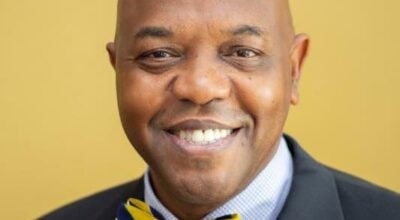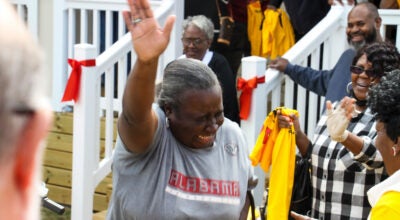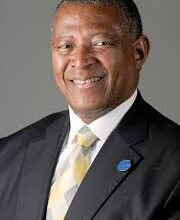Haunted tours frighten crowds
Published 10:36 pm Monday, October 22, 2012
Friday was a frightfully fun night for folks on the Haunted History Tour at Old Cahawba.
Guests from Dallas County to Starkville, Miss., came to Old Cahawba to embark on one of five 90-minute investigations under the stars, where belief in ghosts was not necessary to hear the past speak.
Upon arrival on the grounds, guests were transported to two locations on Old Cahawba. The young and old alike were eager to hear ghost stories from the past and learn how to ghost hunt with the Central Alabama Paranormal Investigations.
“This is the one night of the year you can be here at Old Cahawba,” Linda Derry, site director of Old Cahawba said, which is one of the reasons she finds the Haunted History Tour so special.
Old Cahawba closes its gates at 5 p.m. each day, but on Friday they opened their gates after dark for a limited number of guests.
The first stop on the tour took guests to the “new” cemetery, as it was called during the 1800s. The only lights in the cemetery were luminaries lighting the path deemed safe for guests to walk on, and the light of thousands of stars overhead, setting the mood for an eerie start to the tour.
“Stay inside the light,” Derry urged those touring the grounds. “There are lots of things, like sunken graves where you could break an ankle.”
The sound of crickets, the crunch of the grass as the tour group explored and the panting of breaths, were the only sounds that could be heard in between ghost stories.
“Ghost stories are linked to specific places in Cahawba. Stories that have been told for generations, some of them as old as 150 years,” Derry said. “We’re also going to tell you some personal experiences because working here, we’ve all — skeptics and believers alike — we’ve all experienced something that we can’t explain.”
The stories in the cemetery included chilling tales of the laughing children that never seem to be found, a panther-like creature that lives in the cemetery known as the wampus cat and a personal experience of the lost keys of maintenance supervisor Don Harvell.
Harvell lost his keys in the park one day, and they were found by some horsemen on the other end of town in the slave cemetery, “where the ‘key-stealing slave’ was buried,” Derry said.
Derry said it’s hard to keep maintenance workers.
“I’ve lost a few maintenance people, because they don’t like to work down here by themselves,” she said.
And after hearing story after story, the guests soon understood why.
Derry had a theory about the ghosts in the new cemetery.
“They made these beautiful family plots and they expected their children and grandchildren to be buried with them. They never expected the town to die,” she said. “Then their family moved away, so they weren’t buried with them. And then later they didn’t even maintain the cemetery; it had grown up, and we had to clear it and open it again. So they’re probably a little cranky about that.”
The second stop on the tour took guests to the old slave quarters, for a much larger house that burned down, where the Central Alabama Investigations (CAPI) demonstrated how they use electronic voice phenomenon and electromagnetic field equipment to detect paranormal activity.
“Whenever we came to Cahawba for the very first time, we got so much evidence that it was the second most haunted place in Dallas County, as far as CAPI was concerned,” Johnny Rushing, lead investigator and founder of CAPI. “It’s very, very active. This in particular is the slave quarters, we’ve never done an investigation here, or had this event and not gotten something.”
At the end of the tour, guests gathered near a bonfire near the welcome center, sipping on hot apple cider and shared ghost stories of their own.
“It’s a place where history in the past meets the present, and as a historian and archeologist that’s kind of my job to bring the past alive,” Jonathan Matthews Old Cahawba’s assistant director said. “And in a way, that’s what ghosts are all about. Ghosts are part of the past that influence the present.”




